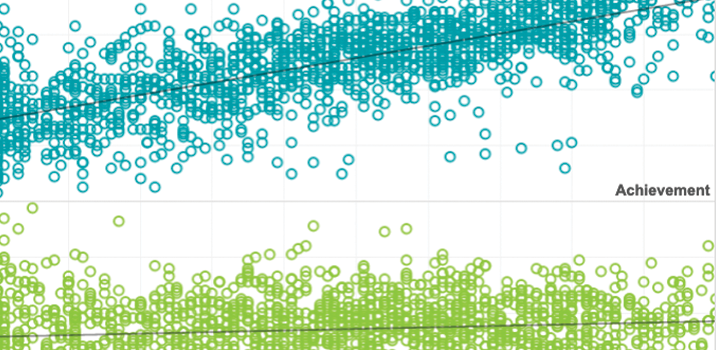Growth modeling


The current investigative study uses a multiple-indicator, latent-growth modelling (MLGM) approach to examine the longitudinal achievement construct and its invariance for MAP Growth.
By: Shudong Wang, Hong Jiao, Liru Zhang
Topics: Measurement & scaling, Growth modeling


Modeling student growth has been a federal policy requirement under No Child Left Behind (NCLB). In addition to tracking student growth, the latest Race To The Top (RTTP) federal education policy stipulates the evaluation of teacher effectiveness from the perspective of added value that teachers contribute to student learning and growth. Student growth modeling and teacher value-added modeling are complex.
Topics: Growth modeling, Measurement & scaling, Student growth & accountability policies


Modeling student test-taking motivation in the context of an adaptive achievement test
This study examined the utility of response time-based analyses in understanding the behavior of unmotivated test takers. For an adaptive achievement test, patterns of observed rapid-guessing behavior and item response accuracy were compared to the behavior expected under several types of models that have been proposed to represent unmotivated test taking behavior.
Topics: Measurement & scaling, Growth modeling, School & test engagement


The development of racial/ethnic and socioeconomic achievement gaps during the school years
This study examined developmental trends in academic achievement gaps between poverty and race/ethnicity groups from school entry to middle school using two large longitudinal data sets. We used time-varying effect modeling (TVEM) to estimate how the associations among race/ethnicity, poverty status, and math and reading achievement vary across continuous age from age 5 to age 15.
By: Megan Kuhfeld, Elizabeth Gershoff, Katherine Paschall
Topics: Equity, Growth modeling


In this study, we apply the Compound Polynomial or “CP” model in a school evaluation context. The CP model addresses the seasonality of student test scores by simultaneously estimating between- and within-year growth.
Topics: Growth modeling, Seasonal learning patterns & summer loss, Student growth & accountability policies


Validating the SEDA measures of district educational opportunities via a common assessment
his study describes a convergent validity analysis of the SEDA growth estimates in mathematics and English Language Arts (ELA) by comparing the SEDA estimates against estimates derived from NWEA’s MAP Growth assessments.
By: Megan Kuhfeld, Thurston Domina, Paul Hanselman
Topics: Equity, Growth modeling, Measurement & scaling


Reconciling long-term education policy goals with short-term school accountability models
Schools are increasingly held accountable for their contributions to students’ academic growth in math and reading. Under The Every Student Succeeds Act, most states are estimating how much schools improve student achievement over time and using those growth metrics to identify the bottom 5% of schools for remediation.
Topics: Measurement & scaling, Growth modeling, Student growth & accountability policies


